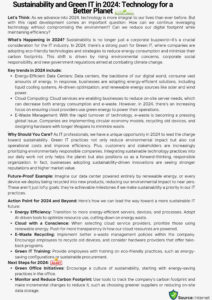
In recent news, SpaceX, the pioneering rocket company helmed by billionaire Elon Musk, has come under scrutiny for a serious workplace accident that resulted in a near-amputation incident. This unfortunate event has not only led to a fine of $3,600 but has also highlighted broader concerns regarding worker safety within the organization.
The incident, which occurred at SpaceX’s Washington state site, underscored significant gaps in safety protocols and raised questions about the company’s commitment to ensuring the well-being of its employees. According to reports citing inspection records, the accident was a consequence of lax safety measures, with the site lacking a comprehensive safety program and clear work rules.
Despite the severity of this particular incident, it is not an isolated case within SpaceX’s history. Investigations have revealed a pattern of worker-safety violations across various SpaceX locations in the United States, with at least 600 unreported injuries recorded since 2014. This alarming revelation sheds light on the urgent need for stringent safety regulations and proactive measures to safeguard the workforce.
The recent inspection report emphasized the critical importance of implementing robust safety protocols to mitigate risks and prevent future accidents. Key deficiencies identified included the absence of a thorough safety program, unclear work rules, and a lack of mechanisms to address violations promptly. These shortcomings not only jeopardize the physical well-being of employees but also erode trust and confidence in the company’s leadership.
In light of this incident, it is imperative for organizations, regardless of their industry or scale, to prioritize workplace safety as a non-negotiable aspect of their operations. To this end, here are 10 proven safety measures that businesses can adopt to enhance workplace security and protect their most valuable asset—their employees:
- Comprehensive Safety Training: Provide employees with thorough training on safety protocols, hazard recognition, and emergency procedures to empower them to identify and mitigate risks effectively.
- Regular Safety Inspections: Conduct routine inspections of the workplace to identify potential hazards, address deficiencies promptly, and ensure compliance with safety regulations.
- Clear Communication Channels: Establish clear communication channels between management and employees to facilitate the reporting of safety concerns, near-misses, and incidents without fear of reprisal.
- Personal Protective Equipment (PPE): Mandate the use of appropriate PPE, such as helmets, safety goggles, and steel-toed boots, to minimize the risk of injury in high-risk work environments.
- Hazard Assessments: Conduct thorough hazard assessments to identify potential risks and implement preventive measures, such as machine guarding, to protect workers from harm.
- Emergency Response Planning: Develop comprehensive emergency response plans outlining procedures for evacuations, medical emergencies, and crisis management to ensure a swift and effective response to unforeseen events.
- Safety Committees: Establish safety committees comprised of representatives from management and frontline employees to promote collaboration, identify safety issues, and implement corrective actions.
- Continuous Improvement: Foster a culture of continuous improvement by soliciting feedback from employees, conducting regular safety meetings, and implementing proactive measures to enhance workplace safety.
- Behavioral Safety Programs: Implement behavioral safety programs aimed at promoting safe work practices, recognizing positive behavior, and addressing potential safety violations through coaching and reinforcement.
- Leadership Commitment: Demonstrate visible leadership commitment to workplace safety by allocating resources, setting clear safety objectives, and holding individuals accountable for adherence to safety standards.
By incorporating these proactive safety measures into their operations, organizations can create a culture of safety where employees feel valued, protected, and empowered to contribute to their fullest potential. Moreover, prioritizing workplace safety not only mitigates risks and prevents accidents but also enhances productivity, morale, and overall organizational success.
In conclusion, the recent workplace accident at SpaceX serves as a sobering reminder of the importance of prioritizing workplace safety and implementing robust safety measures to protect employees from harm. By learning from this incident and proactively addressing safety concerns, organizations can create safer, healthier, and more resilient workplaces for the benefit of all.






